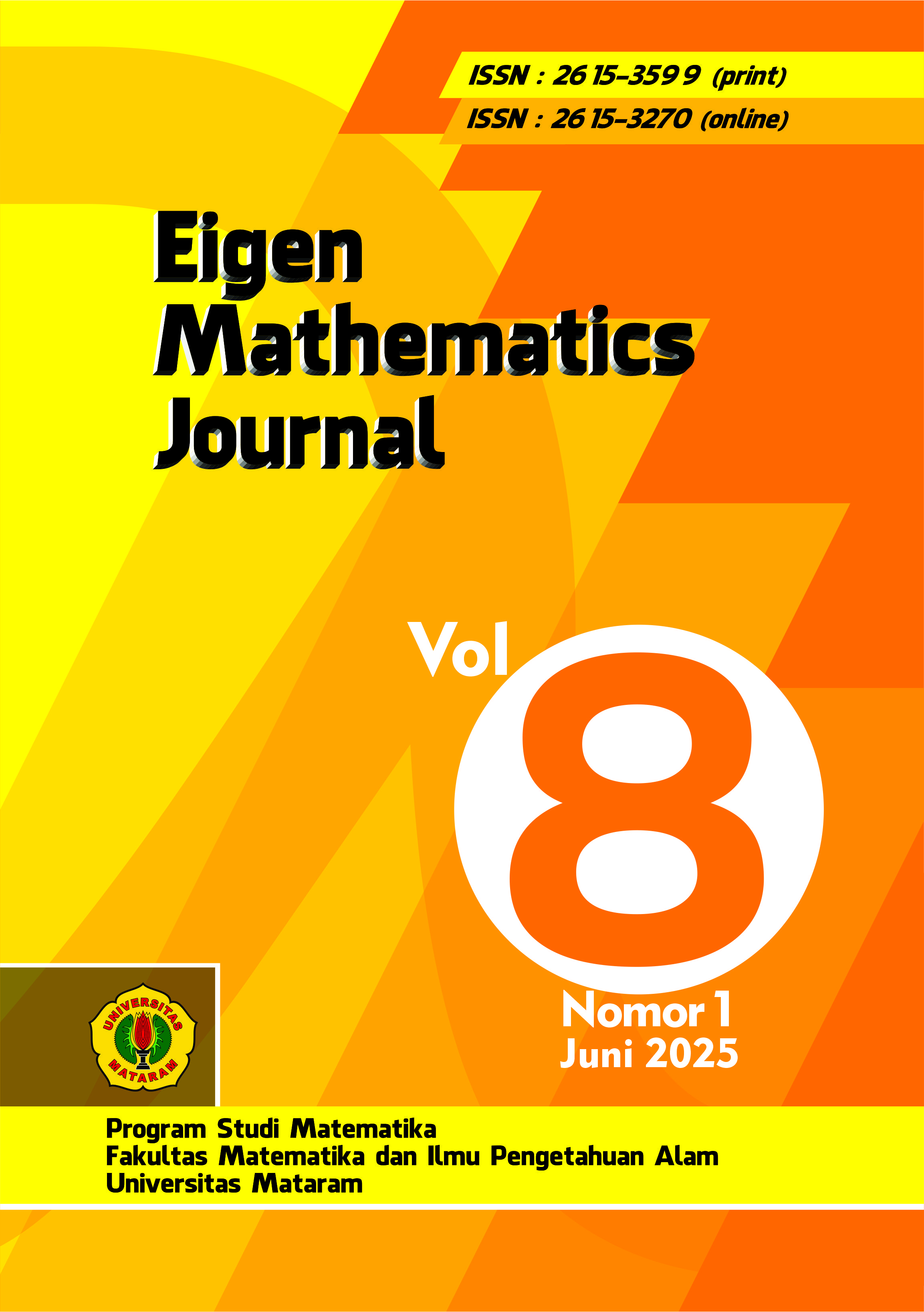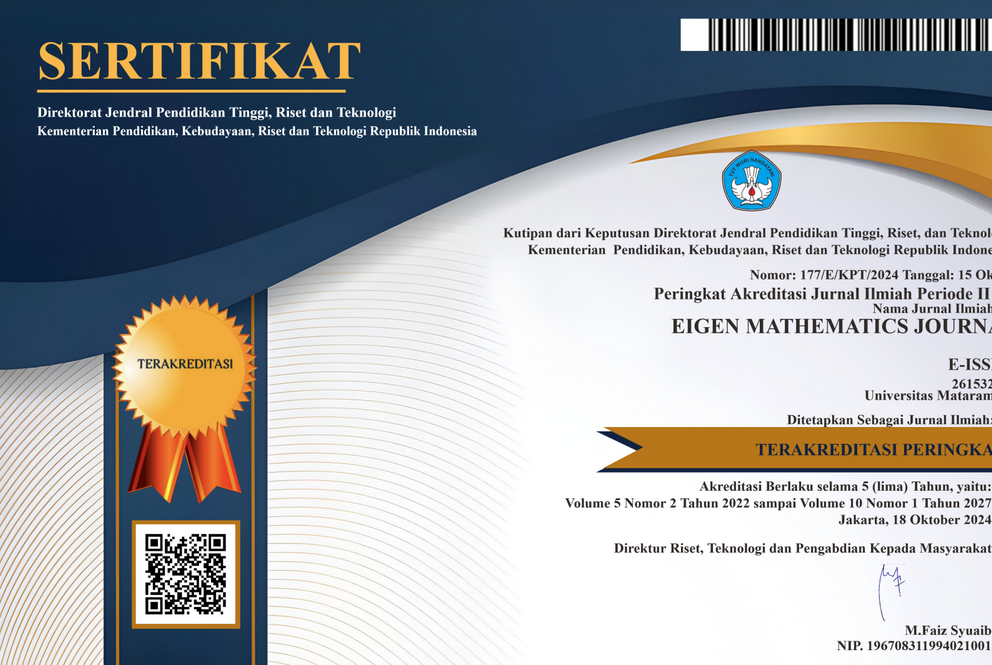Crisping the Fuzzy ARIMA Intervals of Possibility for Short Term Forecasts
DOI:
https://doi.org/10.29303/emj.v8i1.272Keywords:
ARIMA, Crisp Forecast Values, FARIMA, Fuzzy Time Series, Intervals of PossibilityAbstract
The Fuzzy autoregressive integrated moving average (FARIMA) model is a fuzzy-enhanced version of the autoregressive integrated moving average (ARIMA) model that yield improved prediction accuracy with fewer data observations as compared to the classical ARIMA models. The FARIMA time series utilizes membership functions of the fuzzy coefficients and generates forecasts in the form of possibility intervals. However, the FARIMA model does not provide crisp forecast values for forecasting future possibility intervals. This paper aims to simultaneously achieve in-sample and out-sample intervals of possibility forecasts by converting Fuzzy ARIMA possibility intervals into crisp values. The method is tested on exchange rate of the New Taiwan Dollar (NTD) against the United States Dollar (USD) and the annual average mean surface air temperature of Nigeria. The results demonstrate that the proposed method produces out-of-sample possibility interval forecasts that closely align with those obtained using observed values in most cases. In addition, forecasts performance evaluation results indicate that the proposed method produces smaller MAPE and RMSE values in LB predictions while approximately competing in UB predictions compared to the considered methods in the literature. Moreover, the proposed method has advantage of forecasting future possibility intervals without relying on crisp out-of-sample observed values. This implies the method could aid policy makers in determining the worst and best projected bounds that could be used for making future decisions without actual out-of-sample crisp observations.References
G. M. Jenkins and G. E. P. Box, Time series analysis : forecasting and control. Prentice Hall, rev. ed ed., 1976. https://cir.nii.ac.jp/crid/1130000797820830336.
Z. Liu and T. Zhang, “An improved arma(1, 1) type fuzzy time series applied in predicting disordering,” 2020. https://www.aimsciences.org/article/id/90d16203-5045-4c60-8d4d-fd806381c3e1.
C. Kocak, E. Egrioglu, and E. Bas, “A new explainable robust high-order intuitionistic fuzzy time-series method,” Soft Comput., vol. 27, p. 1783–1796, Aug. 2021. https://doi.org/10.1007/s00500-021-06079-4.
S. Torbat, M. Khashei, and M. Bijari, “A hybrid probabilistic fuzzy arima model for consumption forecasting in commodity markets,” Economic Analysis and Policy, vol. 58, pp. 22–31, 2018. https://doi.org/10.1016/j.eap.2017.12.003.
M.-J. Wang, G.-H. Tzeng, and T.-D. Jane, “A fuzzy arima model by using quadratic programming approach for time series data,” 01 2009. https://www.researchgate.net/publication/242657295.
H. Du, Z. Zhao, and H. Xue, “Arima-m: A new model for daily water consumption prediction based on the autoregressive integrated moving average model and the markov chain error correction,” Water, vol. 12, no. 3, 2020. https://www.mdpi.com/2073-4441/12/3/760.
M. Khashei, M. Bijari, and G. A. Raissi Ardali, “Improvement of auto-regressive integrated moving average models using fuzzy logic and artificial neural networks (anns),” Neurocomputing, vol. 72, no. 4, pp. 956–967, 2009. https://doi.org/10.1016/j.neucom.2008.04.017.
F.-M. Tseng and G.-H. Tzeng, “A fuzzy seasonal arima model for forecasting,” Fuzzy Sets and Systems, vol. 126, no. 3, pp. 367–376, 2002. https://doi.org/10.1016/S0165-0114(01)00047-1.
S.-M. Chen and B. D. H. Phuong, “Fuzzy time series forecasting based on optimal partitions of intervals and optimal weighting vectors,” Knowledge-Based Systems, vol. 118, pp. 204–216, 2017. https://doi.org/10.1016/j.knosys.2016.11.019.
H. Mehdi, Z. Pooranian, and P. Vinueza-Naranjo, “Cloud traffic prediction based on fuzzy arima model with low dependence on historical data,” Transactions on Emerging Telecommunications Technologies, vol. 33, pp. 1–19, 03 2022. http://dx.doi.org/10.1002/ett.3731.
L. Zadeh, “Fuzzy sets,” Information and Control, vol. 8, no. 3, pp. 338–353, 1965. https://doi.org/10.1016/S0019-9958(65)90241-X.
T. Cansu, E. Bas, E. Egrioglu, and T. Akkan, “Intuitionistic fuzzy time series forecasting method based on dendrite neuron model and exponential smoothing,” Granular Computing, vol. 9, 04, 2024. http://dx.doi.org/10.1007/s41066-024-00474-6.
G. Goyal and D. Bisht, “Adaptive hybrid fuzzy time series forecasting technique based on particle swarm optimization,” Granular Computing, vol. 8, 07 2022. http://dx.doi.org/10.1007/s41066-022-00331-4.
S. Samal and R. Dash, “Developing a novel stock index trend predictor model by integrating multiple criteria decision-making with an optimized online sequential extreme learning machine,” Granular Computing, vol. 8, pp. 411–440, 08 2022. http://dx.doi.org/10.1007/s41066-022-00338-x.
Q. Song and B. Chissom, “Fuzzy time series and its model,” Fuzzy Sets and Systems, vol. 54, p. 269–277, 03 1993. http://dx.doi.org/10.1016/0165-0114(93)90372-O.
H. Ghosh, S. Chowdhury, and Prajneshu, “An improved fuzzy time-series method of forecasting based on l – r fuzzy sets and its application,” Journal of Applied Statistics, vol. 43, pp. 1–12, 2015. http://dx.doi.org/10.1080/02664763.2015.1092111.
M. Alves, P. Silva, C. Jr, G. Vieira, F. Guimarães, and H. Sadaei, “An extension of nonstationary fuzzy sets to heteroskedastic fuzzy time series,” 04 2018. https://www.researchgate.net/publication/323641035 An extension of nonstationary fuzzy sets to heteroskedastic fuzzy time series.
S. Xian, H. Lei, K. Chen, and Z. Li, “A novel fuzzy time series model based on improved sparrow search algorithm and ceemdan,” Applied Intelligence, vol. 53, 09 2022. http://dx.doi.org/10.1007/s10489-022-04036-8.
R. Hanif, S. Mustafa, S. Iqbal, and S. Piracha, “A study of time series forecasting enrollments using fuzzy interval partitioning method,” Journal of Computational and Cognitive Engineering, vol. 2, 03 2022. http://dx.doi.org/10.47852/bonviewJCCE2202159.
H. Tanaka, S. Uejima, and K. Asai, “Linear regression analysis with fuzzy model,” IEEE Transactions on Systems, Man and Cybernetics, vol. 12, pp. 903–907, 1982. http://dx.doi.org/10.1109/TSMC.1982.4308925.
F. Tseng, G.-H. Tzeng, H.-C. Yu, and B. Yuan, “Fuzzy arima model for forecasting the foreign exchange market,” Fuzzy Sets and Systems, vol. 118, pp. 9–19, 02 2001. http://dx.doi.org/10.1016/S0165-0114(98)00286-3.
J. Medina Reyes, S. Cruz Aké, and A. I. Cabrera Llanos, “New hybrid fuzzy time series model: Forecasting the foreign exchange market,” Contaduría y Administración, vol. 66, pp. 1–24, 10 2021. http://dx.doi.org/10.22201/fca.24488410e.2021.2623.
H. K. Abdelkader Sahed, Mohammeed Mekidiche, “Fuzzy auto-regressive integrated moving average (farima) model for forecasting the gold prices,” Journal of Smart Economic Growth, vol. 5, 1 2020. https://jseg.ro/index.php/jseg/article/view/90.
S. Torbat, M. Khasheia, M. Bijari, G. Taheri, and M. Fakhari, “Application of the fuzzy auto-regressive integrated moving average (farima) model for iran’s steel consumption forecasting,” in 13th International Conference on Industrial Engineering, pp. 1–23, Mazandaran University of Science and Technology: Iran Institute of Industrial Engineering, 2017. https://www.sid.ir/fileserver/se/502e201713101.pdf.
G. Emamverdi, M. S. Karimi, S. Khakie, and M. Karimi, “Forecasting the total index of tehran stock exchange,” Studii Financiare (Financial Studies), vol. 20, no. 1, pp. 54–68, 2016. https://ideas.repec.org/a/vls/finstu/v20y2016i1p54-68.html.
Y. Xie, P. Zhang, and Y. Chen, “A fuzzy arima correction model for transport volume forecast,” Mathematical Problems in Engineering, vol. 2021, no. 1, p. 6655102, 2021. https://onlinelibrary.wiley.com/doi/abs/10.1155/2021/6655102.
M. Khashei, F. Mokhatab rafiei, and M. Bijari, “Hybrid fuzzy auto-regressive integrated moving average (farimah) model for forecasting the foreign exchange markets,” International Journal of Computational Intelligence Systems, vol. 6, pp. 954–968, 06 2013. http://dx.doi.org/10.1080/18756891.2013.809937.
A. Retnowardhani and M. Noor, “Comparison between arima, fuzzyarima and arima-fac for better interval prediction to help decision making process,” 09 2013. https://www.researchgate.net/publication/303940937.
E. Egrioglu, C. Aladag, U. Yolcu, M. Basaran, and V. Uslu, “A new hybrid approach based on sarima and partial high order bivariate fuzzy time series forecasting model,” Expert Syst. Appl., vol. 36, pp. 7424–7434, 05 2009. http://dx.doi.org/10.1016/j.eswa.2008.09.040.
L. Zadeh, “The concept of a linguistic variable and its application to approximate reasoning—i,” Information Sciences, vol. 8, no. 3, pp. 199–249, 1975. https://doi.org/10.1016/0020-0255(75)90036-5.
M. Bakawu, A. Buba, and A. Malik, “Forecasting the real gdp in nigeria using possibilistic linearregression model,” Benin Journal of Statistics, vol. 6, pp. 59–69, 2023. https://www.researchgate.net/profile/Maigana-Bakawu/publication/372159622.
“Word bank climate change knowledge portal, “climate change overview : country summary”.,” tech. rep., World Bank, 2024. https://documents1.worldbank.org/curated/en/099110723172027535/pdf/BOSIB0151d9e120120a2340c19d88ab9359.pdf.
Downloads
Published
How to Cite
Issue
Section
License

This work is licensed under a Creative Commons Attribution-NonCommercial-ShareAlike 4.0 International License.
All articles published in the Eigen Mathematics Journal will be available for free reading and downloading. The license applied to this journal is Creative Commons Attribution-Non-Commercial-Share Alike (CC BY-NC-SA).






